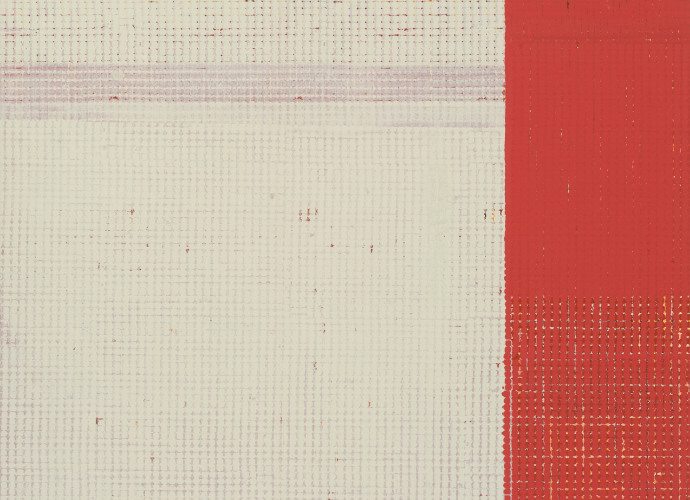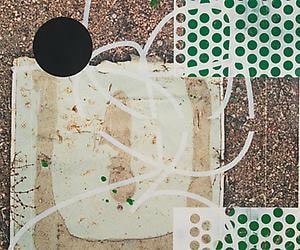
A Conversation with Kevin Appel
by Julia Schwartz
Figure/Ground Communications, 28 June 2013

By Julia Schwartz of Figure/Ground Communications
Kevin Appel was born in Los Angeles. He received his BFA from Parsons School of Design in 1990 and his MFA from the University of California in 1995. He is a Professor and Associate Chair of Graduate Studies at the University of California Irvine. His solo exhibitions include Susanne Vielmetter Los Angeles Projects, Culver City (2012); ACME Gallery, Los Angeles (2009); Two Rooms Gallery, Auckland (2008); Wilkinson Gallery, London (2006); Angles Gallery, Santa Monica (2006, 2002, 1999, 1998); Museo Rufino Tamayo, Mexico City (2003); Marianne Boesky Gallery, New York (2001); and the Museum of Contemporary Art, Los Angeles (1999). His work is included in MOMA, LACMA, MOCA, and Portland Art Museum in Oregon. He has an upcoming show at Christopher Grimes Gallery in September 2013. Appel maintains a studio in Los Angeles.
Q: What attracted you to the arts? What were your earliest experiences of making art?
A: Honestly, I can’t remember. There wasn’t really a time where I wasn’t involved in art making – it was always an emphasis in my home.
Q: Did you go to art school? If not, what did you study in school? And how did you come to art?
A: I did – I went to Otis in Los Angeles, Parsons in New York, and UCLA. I had an open education in this regard; sculpture, photo, etc. But I was bewitched by painting rather early on.
Q: Who were some of your mentors? Inspirations? Influences? What about current influences? Who do you look at now or listen to?
A: That is always a tough question because they are so many and constantly changing. But some heavies for me are: Guston, John McLaughlin, Blinky Palermo, DeKooning, Motherwell, Agnes Martin, René Daniëls, Albert Ayler, Miles Davis, Tarkovsky, Auden, William Carlos Williams…See how this goes? Could be pages.
Q: Indeed, that is a great list. Can you describe your first projects/exhibitions.
A: I began working with architecture at the intersection of painting early on. My second major exhibition was an installational arrangement of large-scale paintings based on home of my own design. The paintings were installed according to a mapping of the structure that allowed for a virtual drift through the spaces adding up to an immersive experience of the house.
Q: Could you talk about a significant success? Or a noteworthy failure that was an important turning point in your career?
A: I stumbled and fell on my face for the better part of two years developing the current iteration of my paintings. 2007-2009 was a big growth period for me – stumbling and picking myself up repeatedly, gaining calluses and knowledge at each step.
Q: I can relate to that – that falling and failing is how you get to a new place. But can you expand on that, your specific experiences?
A: In this case it was about allowing myself more freedom in the process. Responding to something that already could be considered complete and obstructing that completion. They work best when they don’t quite align.
That type of growth through awkward attempts or stabs at something you see in your mind but can’t quite get your hands to follow suit is not discussed so much in this professionalized system we have now. Seems shows have to just appear – airless and resolved (and spectacular, lets not forget spectacular).
These are ultimately grace periods in my practice.
Q: That willingness to “obstruct completion,” to risk being awkward seems crucial to being a lifelong artist. I agree that acquired “professionalism” can work against that (as much as one’s personal avoidance of it). That makes me want to ask about your experience as an art professor.
A: I’ve been at UC Irvine for 13 years. I teach everything from interdisciplinary critiques to large lecture classes on painting. In all cases I imagine my job as getting an artist to find out how it is they work best. Where their real interests lie. It can be a difficult thing when you are getting all of this information thrown at you for years to find the balance between that and a voice so to speak. I try not to impose my structure or ideology on their practice but rather fortify the foundation of what they already have or what they are clearly best at. If I can give someone a glimpse at a sustainable working methodology before they leave the program, I feel I’ve done my job.
Q: Can you describe your rituals or routines in the studio – i.e. daily painting vs. sporadic, music, etc?
A: I try to get into the studio each day. Even if I don’t have time to work. Reading the paper or a book, looking and being around the work is key. My process seems to be about building – it begins very slowly and accelerates as I move along until the final stages of a body of work which becomes quite chaotic and outside of thought.
Q: Can you talk about your choice of materials: are you consistent with this or do you switch it around? What is it like to introduce new materials like sculpture, photography into your practice? I’m thinking especially of the screen and other works from 2012.
A: The screens are a pleasure to work on. They make physical the affect that is created by the photo-paint combinations in the paintings. I have only made thus far, but am in process on others. They are becoming an integral part of the discussion.
Q: Do you start work with a concept or does the idea come later? Can you talk about your process?
A: I don’t really separate my process in to concept or non-concept. It’s a balance of images that appear in my head, but they usually fall within a framework of whatever it is I am thinking about at that time. Largely intuitive and about visual literacy or the sense that the painting delivers I save the literacy analysis for later.
Q: I spent a lot of time admiring your website. (It is really cool and meticulous site, by the way, an academic’s dream maybe, because of how it is organized.) One reaction I had was to admire it and wish I had that capacity. More specifically, it was an opportunity to look at the work you have done over the years from 1995 to the present and to see the shift in your work, what has changed and what hasn’t. The architectural elements remain, but there has been a radical, metaphoric, and literal deconstruction of the elements, a dis-articulation of structures. I also see a shift form interior space to exterior space, and maybe also from organized to disorganized, and so on (I don’t want to be too Cartesian here!) Am I projecting here or is this a real shift in your work?
A: It is. I would say that I still deal with interior and exterior in the relation of surface to space. When I look at the work I still see a reference to architectural space although I understand how this is better informed by following the dissolution that takes place over the course of many years. Not by long range design but by following instinct, I have taken a legible space (1995) and watched it explode, implode, and rebuild over time. The social and formal implications of this dis-articulation intrigue me. There has been a destructive impulse in the work.
Q: Along the same lines, I read some other interviews related to your 2012 show so I don’t want to make you repeat yourself, but I’m really interested in this turn in your work. Or maybe multiple turns, from straightforward Mad Men-style interiors (although you totally preceded the show) in 1995-96 to somewhat to these fractured images (House: Northwest View, 1999).
A: Early on the interest in architecture was motivated by a desire to bring space back into my work. Clean, unpopulated space. Over time the objects in the interiors acted as stand ins for occupants, so I got rid of them. By ’99 I was designing a house specifically for the work and using this design for an installation where the paintings built together to create an understanding of the space. From there by 2004-06 I was becoming interested in home as a more quotidian reference this ultimately exploded into rubble, what I call the pile paintings. I would say the current work takes all of these impulses and pares them down into concise explorations of the same interests. They look at me as if they are combining the vast flat planes of the early work with the dissolution that followed.
Q: When I read this, it sounded like a metaphor for the current disintegration and collapse – things falling apart: war, economic meltdown, global warming, political crises. From the clean homes and interiors/occupants to the fractured/rubble. I don’t know if that is intentional or not, but it’s really interesting to me and it comes up in my own work.
A: Of course, these things make it into the work. Domestic, economic, social upheaval and collapse have been an undercurrent of the paintings for years. It’s largely intuitive – I am not interested in direct story telling so much as a sense that the work can give.
Q: I think I read that books were an influence on your work; I feel the same. What books have been influencing you lately?
A: I am usually into two or three books at once. Right now it’s: The Collected Stories of Richard Yates, William T. Vollman’s Imperial, and After Art by David Joselit.
Q: Revolutionary Road (by Yates) – also on the theme of the collapse of marriage and society in the 50s or 60s.
A: Yes, it’s one of my favorites.
Q: Can you describe what you are working on now?
A: I am working on a series of sculptures and paintings that take gestures from the landscape (often industrial landscape) as a basis for abstraction. I start with a photographic base and respond to it with subsequent layers of acrylic, oil and enamel.
Q: What’s next as for as projects and/or exhibitions?
A: I have a show at Christopher Grimes Santa Monica in September 2013 and a show at Ameringer McEnery Yohe, NY in spring 2014.
Q: Any advice for future or emerging artists?
A: Work. Be in the studio every day – even if it is just to sharpen your pencils, read or clean the floor.
http://figureground.ca/2013/06/28/a-conversation-with-kevin-appel/